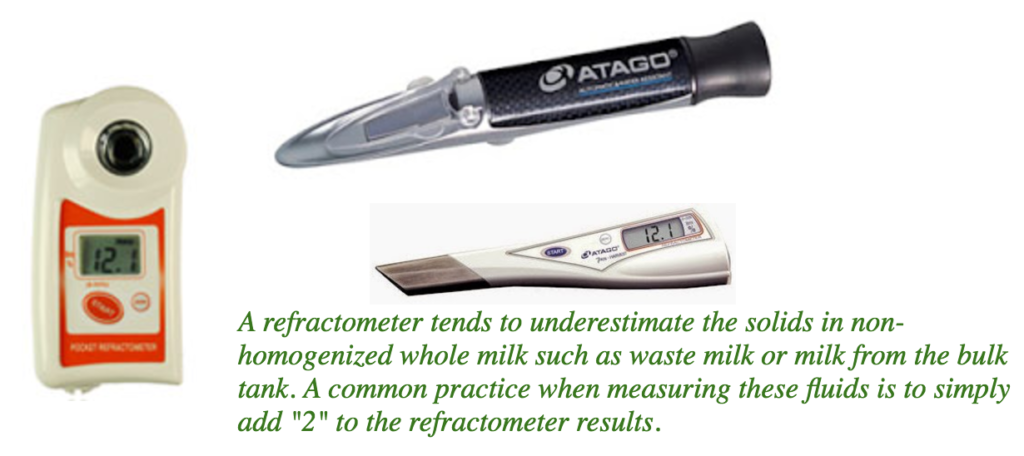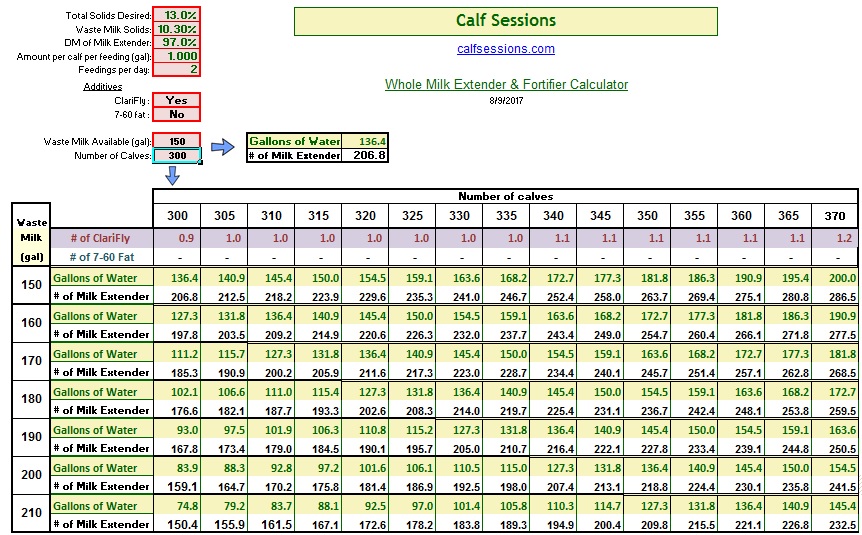~ updated Jan 15, 2015.
Most operations that feed waste milk to calves use milk extenders or supplements to enhance their supply of whole milk, at least periodically. Their waste milk supply could be limited or they may have a desired solids level they try to achieve. As a result, they still have a need for a milk replacer type of product.
Formulations of these products vary depending on the farm’s objectives. A 20% protein, 20% fat milk replacer is an old standard that is often blended with waste milk and water to extend the milk supply. It can also be fed directly to calves when the waste milk is used up. Variations on this approach include 22-22 and 24-24. Each has a slightly different effect on the protein and fat in the final mixture when added to waste milk.
Another approach is to measure protein and fat in the waste milk and have a custom formula made to that analysis. This approach attempts to minimize variability in protein and fat from one feeding to the next. An alternative approach is to match the typical protein level in waste milk by using a 25-15 milk replacer. The lower fat level in this formula reduces the fat level in the final mix, enhancing starter feed intake.
Milk Extenders and fortifiers provide a special opportunity to take advantage of non-milk proteins. The use of certain non-milk proteins in milk replacer formulas can reduce cost while maintaining growth and performance . In this case, the milk extender makes up a only portion of the complete diet. Percentages of non milk proteins, such as plasma or wheat, are higher than normal milk replacer inclusion levels, further reducing cost. These specially formulated products should not be fed directly to calves as their only source of nutrition. The level of non-milk proteins may be too high for them to be fed as regular milk replacers.
Extending the milk supply with a milk replacer product usually requires the addition of water. To minimize variability of the final mix, many operations use a refractometer to measure total solids in the waste milk. Knowing waste milk solids allows the correct amount of water and powder to achieve the desired solids level in the final mix.
Refractometers

Whole Milk Extender & Fortifier Calculator
Managing daily variation in waste milk solids is much easier than managing fluctuations in protein and fat. The amount of waste milk available and the number of calves to be fed can change frequently. It takes a bit of calculating to figuring out the amounts of powder and water that need to be added to waste milk. You can do this by hand… or you can use a calculator like the one below.
Simply enter values in the red cells and the calculator does the rest. The right arrow points to the results of the calculation, listing the water and powder needed for one feeding. The down arrow points to the results in a chart format that shows what to do at various calf numbers and various amounts of waste milk.
Additives
The calculator also provides inclusion levels of two common additives. ClariFly for fly control and 7-60 fat for supplemental energy. Recommended feeding rates are based on manufacturers specifications.

Using a calculator like this makes the job of calculating daily mix ratios a simple task.
Download a working copy of the Whole Milk Extender & Fortifier Calculator.
If you are interested in tools for economic evaluations of on-farm pasteurization and feeding options you might want to check out Penn State Calf Milk Pasteurizer Evaluator.
